Read Across America Week


Give blood – Give life
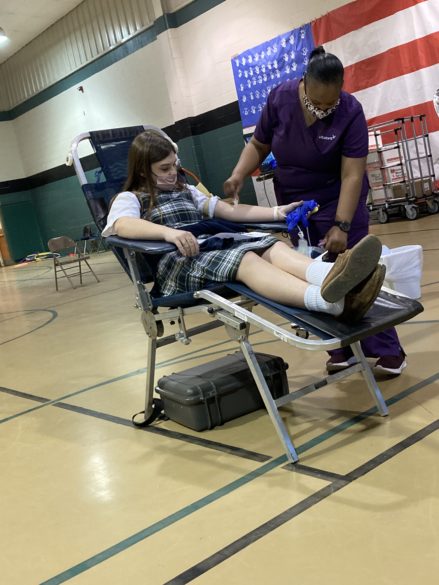
Ready … Set … STREAM
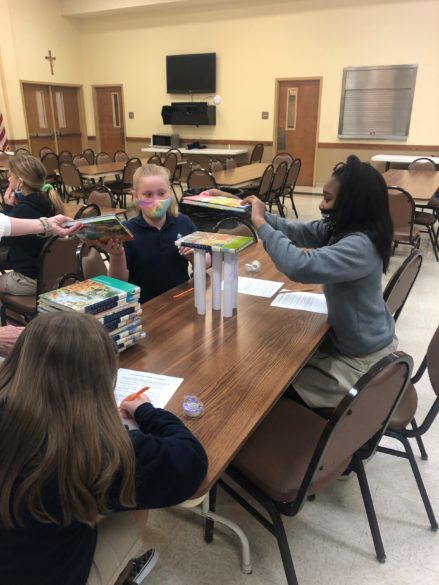
Stone soup, anyone?
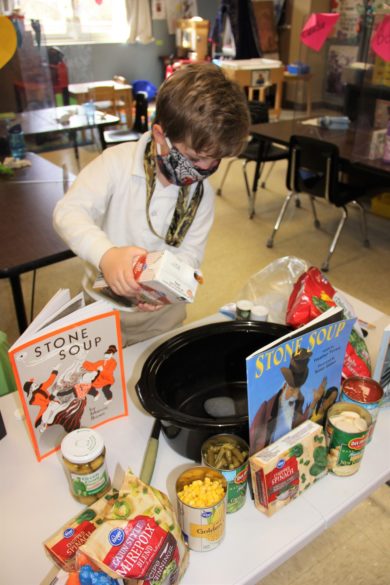
Working away or a play?

Read Across America Week


Give blood – Give life

Ready … Set … STREAM

Stone soup, anyone?

Working away or a play?

By Joanna Puddister King
JACKSON – Lent is a special time of prayer, penance, sacrifice and good works in preparation of the celebration of Easter. Last year, Lent began with packed churches on Ash Wednesday on Feb. 26, 2020, but the world quickly changed as the reality of COVID-19 set in when the World Health Organization declared the coronavirus a pandemic on March 11, 2020. With churches in the diocese shuttered from March through Pentecost on May 31, many parishes took the dive into sharing Stations, Rosaries and Mass through livestreaming.
As the church enters into Holy Week in 2021, our churches still look a little different with social distancing and mask use in effect, but the celebrations will give all an opportunity to walk with Christ through the crucifixion and into the new life of Easter, whether in person or virtual.
As in 2020, the Holy See issued decrees regarding the celebrations of Holy Week during COVID-19.
Palm Sunday is the final Sunday of Lent, the beginning of Holy Week, and commemorates the triumphant arrival of Christ in Jerusalem, days before he was crucified. While the receiving of palms was restricted last year, this year the faithful may receive palm fronds.
On the Tuesday of Holy Week priests from across the diocese will gather at the Cathedral of St. Peter the Apostle for the Mass of the Oils, also known as the Chrism Mass. Bishop Joseph Kopacz will bless and consecrate the oils which will be used throughout the year for baptisms, anointing of the sick, and confirmations. As in 2020, the Chrism Mass will be closed to the public this year.

The Last Supper, the Mass of the Institution of the Eucharist, is the center of Holy Thursday. Lent officially ends with the beginning of this liturgy, which starts the three most holy of days in the church’s liturgical calendar – the Sacred Triduum. Normally, on Holy Thursday many pastors follow Christ’s example by washing the feet of members of their congregations, a reminder of the gospel call to service. However, as last year, the Holy See’s decree eliminates this optional tradition again in 2021.
Good Friday is the only day of the year when no Mass is celebrated. Catholics gather to hear the passion story, reflect on the Way of the Cross and Christ’s last words before his death. This year, there will be no individual veneration of the Cross by members of the congregation.
On Holy Saturday at “the Solemn Beginning of the Vigil or Lucenarium,” Vatican directives have omitted the preparation and lighting of the fire and the procession into the sanctuary.
Again, while Holy Week will look different, let us celebrate the coming of the Lord and remain viligent for the safety of all from COVID-19. Be sure to check with your individual parish for attendance requirements, as space is limited and many have reservation systems in place in order to maintain the safety of all.
By Joanna Puddister King
PHILADELPHIA – At 72 years old, Father Robert “Bob” Goodyear had much to reflect on for his nomination by the Diocese of Jackson for the Catholic Extension Lumen Christi award, that celebrates Christ’s call to service to his church. Father Goodyear truly demonstrates how the power of faith can transform lives – in his case, the Choctaw community.
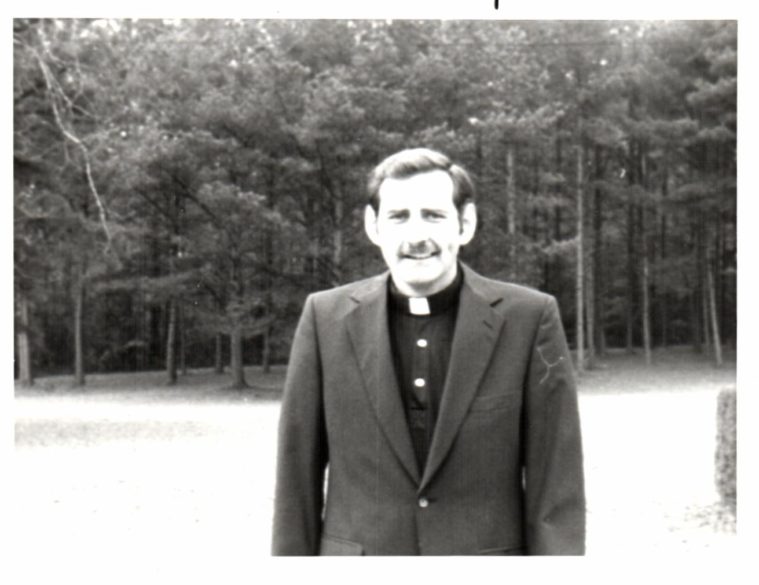
When he first arrived on the Choctaw Reservation in 1975 as a newly ordained Missionary Servant priest, Father Goodyear described the “mission” as “having a church workday to cut firewood for the elderly and sick.”
“They were surprised I knew how to use a chainsaw and drive a tractor,” said Father Goodyear – a call back to his very first missionary assignment to Clay county, Kentucky to an Appalachian coal mining town, where he learned to use a chainsaw, dig a foundation by hand and other various construction skills.
In total, Father Goodyear has been assigned to Holy Rosary Indian Mission for 31 years, but not continuously. He served from 1975 to 1990, then was assigned to a mission in Tennessee, then to one in Magee. He returned to the Choctaw Reservation in 2006.
The reservation went through many changes while Father Goodyear was away at other missions. “The dirt roads were paved. There are two casinos that subsidize the tribal programs,” he said.
Roads and casino weren’t the only things that changed. When Father Goodyear first arrived in 1975, Choctaw was the primary language of 98% of the tribe and today that is only true of the elders. Now, most are bilingual.
In his early years at Holy Rosary Indian Mission – a group of three churches consisting of Holy Rosary in Philadelphia, St. Therese Mission in the Pearl River Community and St. Catherine Mission in Conehatta – Father Goodyear read everything he could to learn about the culture of the people he was charged with ministering to.
He eventually gained the trust of the Choctaw community and with the help of three Choctaws he was taught their language.
“As I was first learning Choctaw, I quickly learned there are seven dialects of Choctaw on the reservation and when speaking to someone I needed to know what Choctaw community they came from. Words have different meanings, sometimes very different, in different communities,” said Father Goodyear.
After eight years of studying the Choctaw language, Father Goodyear began translating the Mass into Choctaw with the help of his teachers and an elder, who was the recognized expert on the language. Then with the aid of the Bureau of Catholic Indian Missions, Father Goodyear prepared the translation of the Mass to the United States Conference of Catholic Bishops (USCCB) and then to the Sacred Liturgy office in Rome.
Finally, after eight years with the mission, Father Goodyear was able to celebrate his first Mass in the Choctaw language on May 1, 1983 at St. Catherine Mission in Conehatta.
“The Choctaw language and culture are critical elements in Choctaw self-identity,” said Father Goodyear. “The role of the church here is to believe in the Choctaws, their giftedness, their beauty, their talents, their hopes, so they will believe in themselves as much as God believes in them.”
While his first assignment to Holy Rosary Indian Mission was characterized by “non-traditional” ministries, Father Goodyear learned and did the usual things an associate pastor would do – working with youth, faith education, marriage preparation and the like. When the sisters moved to their new convent building, he remodeled the old convent building and turned it into a recreation center for the youth.
With the Choctaws, he worked with the tribe every chance he could. He worked on a suicide counseling manual, a self-image study, the Choctaw Human Services Council, the Choctaw Most In Need Indian Children and Youth federal demonstration project, and with the Choctaw grant writing office to not only preserve their faith, but the culture and language of the Mississippi Band of Choctaw Indians.
When he returned to the Holy Rosary Mission in 2006, Father Goodyear’s primary focus has been the preservation of the faith and the development of lay leadership in his three churches.
He developed a training manual for Eucharistic ministers that trains them not only to assist in Mass, but also how to lead a Sunday celebration in the absence of a priest and how to take the Eucharist to the sick and shut-ins – a resource used not only on the reservations, but also in other parishes around the diocese and even in parishes in other states.
As a staff of one, what Father Goodyear has accomplished is nothing less than remarkable. Not to mention, rising to the challenge of ministering during the time of the COVID-19 pandemic.
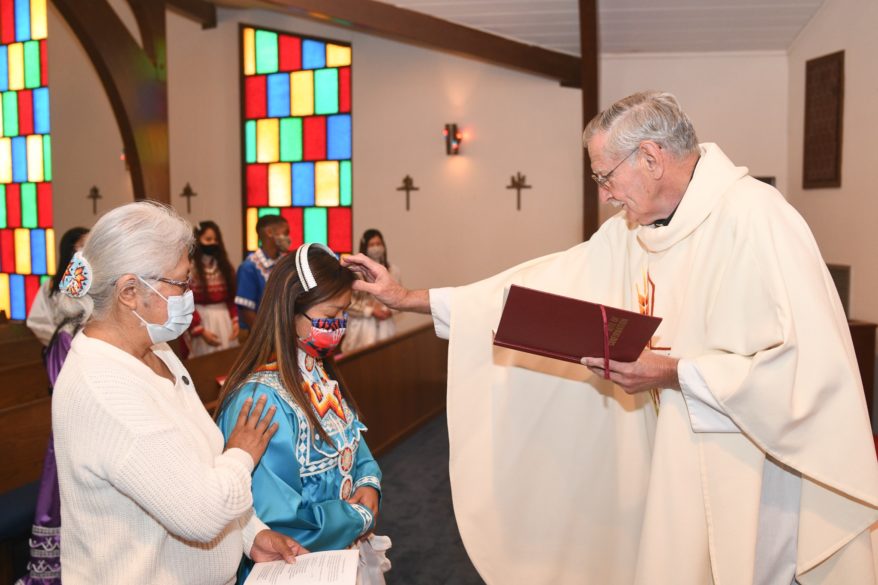
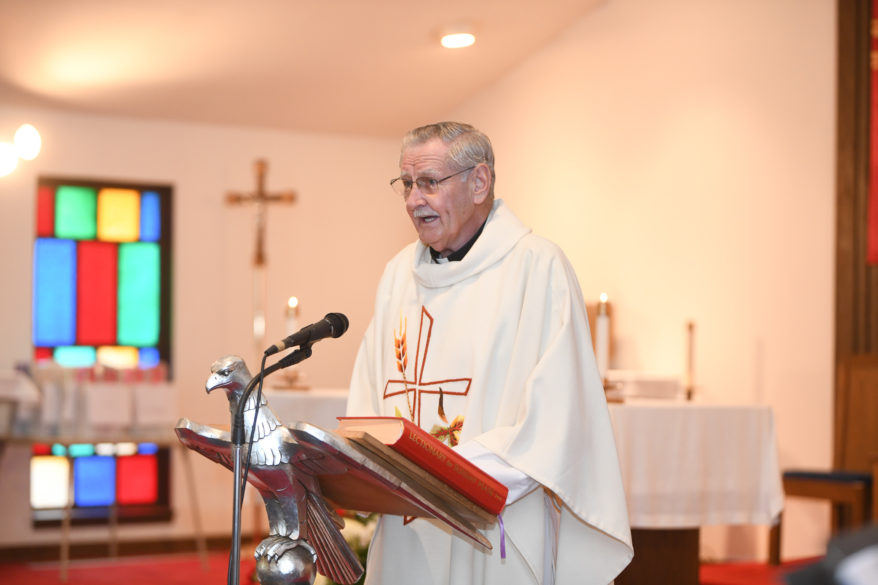
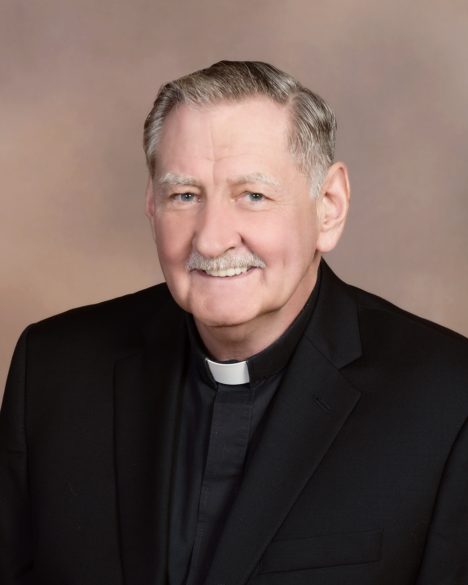
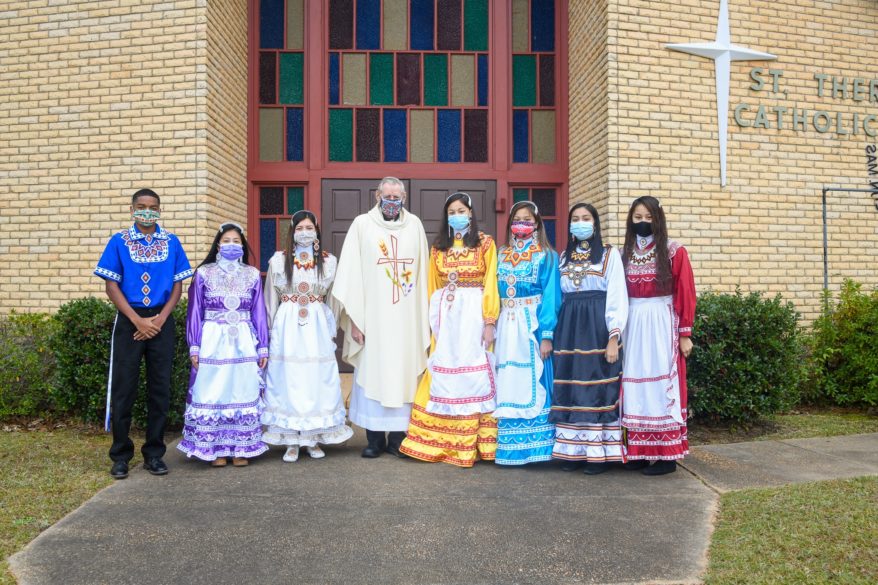
Reports have the percentage of Choctaws affected by the virus at about 18%. For a time, Father Goodyear was tending to two to four funerals per week. He has spent a great deal of his time on the phone, writing letters and messaging on Facebook to give his support to those who are grieving. “It is important to know that they are not forgotten and are prayed for,” says Father Goodyear.
He has also spent much time reaching out to those who have been afraid to come to church because of the virus and has worked along side the tribe encouraging Choctaws to take the vaccine.
As COVID restrictions begin to loosen, Father Goodyear is looking to recruit catechist and reaching out to the children and youth again. This Easter, he will baptize nine children at St. Catherine’s in Conehatta and has 15 young people and five adults in RCIC and RCIA. “While attendance is down in my other two churches, the Holy Spirit has been working overtime in Conehatta,” says Father Goodyear.
He says that his focus now is preparing the reservation to assume more responsibility for the future of their churches. “It is unusual for a priest to be in a place for so long. It was not my “plan,” but it has been a blessing I never expected. In spite of the demands of being a staff of one for three churches, I have never been happier as a priest or feel more blessed personally than I am today.”
(Each Lumen Christi Award nominee receives $1,000 in support of his or her ministry, and the award recipient is given a $50,000 grant, with the honoree and nominating diocese each receiving $25,000 of the grant money to enhance their community and ministry. The winner will be announced later in the year.)
From the Archives
By Mary Woodward
JACKSON – The tear of a woman bears all the pains of the world. I do not remember the movie where I heard this, but I do remember how this quote struck me. March is Women’s History Month, so I would like to highlight some of the women who have made great contributions to our diocesan church quietly behind the scenes and on the world stage.
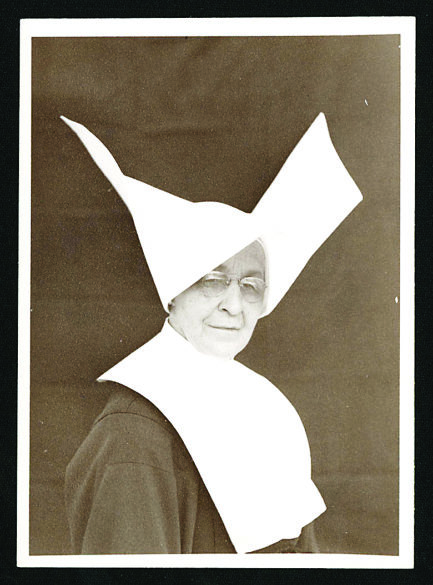
We already read about Madame Felicitê Gireaudeau in earlier columns, who was a towering figure in the early Catholic community in Natchez – known for her acts of charity and resilience. In the 1840s, Bishop John Joseph Chanche invited the Daughters of Charity of St. Vincent de Paul affectionately called the Sisters of Charity, to establish an orphanage for girls in Natchez. The Sisters arrived in 1847 and began St. Mary’s Asylum, which took in girls whose parents had either died or could no longer care for them.
The Sisters were known for their distinctive white cornettes and for the acts of charity they performed throughout the community. Antoinette Thomas, who served in the diocesan tribunal for many years, grew up with the Sisters and often was called upon to iron the cornette with a bucket of starch applied with a paint brush.
It would require a tome larger than Aquinas’s Summa to describe the enormous contributions made to the diocese by these and countless other Sisters throughout the history of our diocese – Mercy Sisters, Carmelites, Dominicans, Ursulines, Holy Spirit Sisters, and a myriad of others. We will save that for another time.
Of course, Servant of God Sister Thea Bowman, FSPA, comes to mind in a large way due to her tenacity, grit and grace. She inspired people all over the world because she saw them, challenged them to be the best person they could be, and loved them.
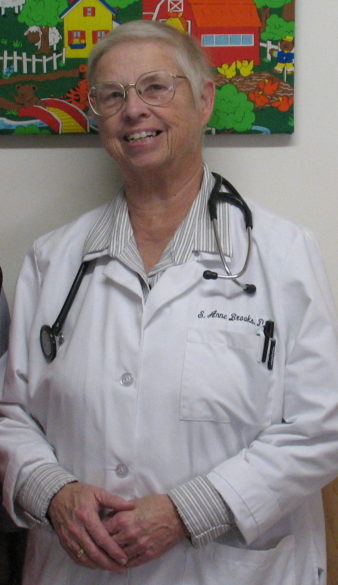
Sister Thea’s canonization cause continues to gather steam. Here is a beautiful quote that encapsulates her faith: “We unite ourselves with Christ’s redemptive work when we reconcile, when we make peace, when we share the good news that God is in our lives, when we reflect to our brothers and sisters God’s healing, God’s forgiveness, God’s unconditional love.”
Some may not know that Sister Thea obtained her doctorate in letters from Catholic University of America in 1972. Her dissertation was on St. Thomas More entitled: “The Relationship of Pathos and Style in a Dyalogue of Comforte Agaynste Tribulacyion: A Rhetorical Study.” That is quite a topic and included studies in the Olde English style. She spent time researching this topic at Oxford University in England.
Sister Thea also was an expert on William Faulkner, speaking and appearing often at the annual Faulkner Conference in Oxford. We frequently think of religious women as kind-hearted women who came among us to serve in schools and parishes. We do not realize how highly educated these women were and are.
In 1982, Sister Anne Brooks, SNJM, obtained a doctor of osteopathy (DO) degree and set about to find a place to serve the underserved in America. She settled on starting a clinic in 1983 in Tutwiler, Mississippi, one of the poorest areas in the United States. The small Delta town’s water tower is painted with “Welcome to Tutwiler, Mississippi: Where the Blues Was Born.”
Dr. Brooks, a true osteopathic physician who embodies the holistic approach to medicine, has given that corner of our diocese a place where people on the margins can receive quality health care. An average year for her included seeing over 8,500 patients where one out of three live in poverty and seven out of 10 walk in the door with no way to pay for care.
She retired in 2017 after securing a partnership for the clinic with the local hospital, Tallahatchie General in Ruleville.
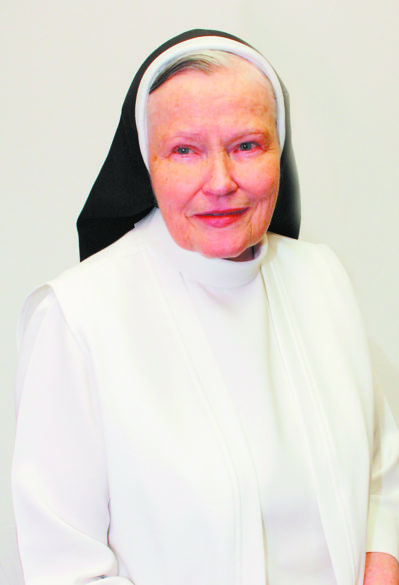
Sister Trinita Eddington, OP, has served her entire 60-plus year vocation as a Dominican here in Jackson at St. Dominic Hospital. The following information from the St. Dominic website gives an account of her ministry.
“Sister Trinita’s nursing background began in 1953 when she enrolled in the St. Dominic School of Nursing after making the profession of vows. With this, Sister Trinita began fulfilling her dream to care for the sick. She became a registered nurse in 1957.”
She helped establish St. Dominic Community Health Clinic for the homeless in Jackson. “treating hundreds of low-income and homeless individuals in the Jackson area through the St. Dominic Community Health Clinic. In addition to providing medical care as a nurse practitioner, as clinic director, Sister Trinita is also responsible and accountable for the overall administration, direction and operation of the clinic.”
Our diocesan chancery and Catholic Charities are filled with extremely competent and dedicated lay women of faith who everyday quietly leave their mark on this corner of God’s kingdom by serving as true disciples of Christ. I cannot name one without leaving out dozens. They serve tirelessly through challenges and adversity to achieve great things – often with a tear bearing the pains of the world. Pray for us.
(Mary Woodward is Chancellor and Archivist for the Diocese of Jackson.)
By Joanna Puddister King
MADISON – In December, when COVID vaccination dates began to open, the Office of Catholic Education began working to determine a teacher eligibility date. As vaccinations were finally opened to all K-12 school, preschool and daycare employees on March 1 by Gov. Tate Reeves, diocese benefits coordinator, Renee Carpenter worked with the St. Dominic MEA clinic on a vaccination event for Jackson Metro area teachers, staff and administrators.
On Thursday, March 11 at St. Anthony School in Madison, almost 70 first vaccinations were administered to participants from St. Anthony, St. Joseph, St. Richard, Assisi Early Learning Center, as well as Catholic Charities and the chancery, bringing a sense of relief to many.
“At first, I was unsure about the vaccine, but now that I have gotten my first shot, I feel good about getting my second,” said Robin Love, a Pre-K4 teacher at Assisi Early Learning Center.
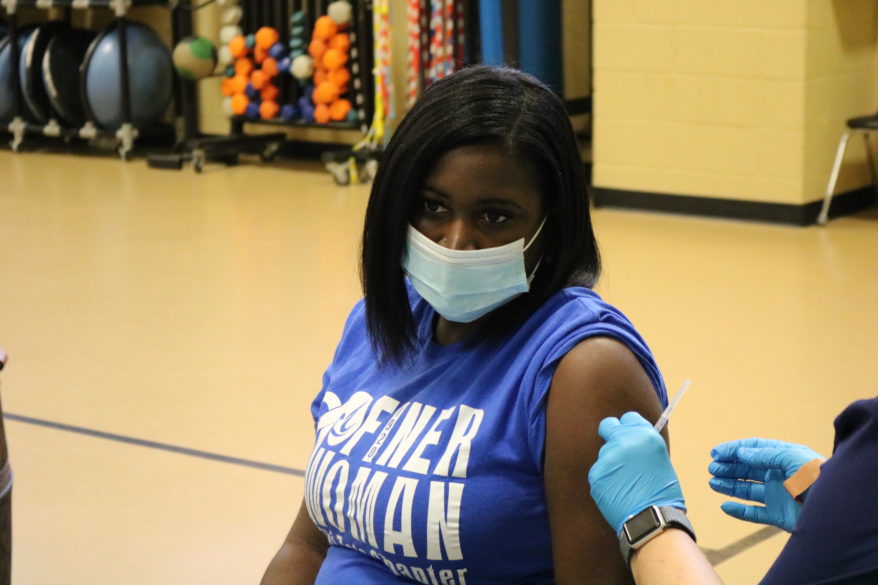
Anne Cowger, principal of St. Anthony, said, “Diocesan teachers and staff members, under the guidance of the Office of Catholic Education, have worked incredibly hard this year to keep our schools and early learning centers open and to provide a safe and healthy environment for the children in our care. St. Anthony Catholic School was pleased to provide our gymnasium as a place for metro area employees to get vaccinated. We were honored to be able to contribute in even a small way in this effort.”
“Our schools are continuing to do everything to make teachers, parents and students feel safe. We have had strong protocols throughout the year and because of that we have had less than 200 cases of COVID-19 since opening in person in August 2020,” said interim Superintendent of Catholic Schools, Karla Luke.
Overall, Catholic schools in the Diocese of Jackson have a total of 3,049 students, not including those in Early Learning Centers. Since returning in August, Catholic schools in the diocese have required masks and implemented enhanced cleaning procedures and more, to help lessen the risk of infection from the coronavirus.
After the vaccination event, assistant superintendent, Stephanie Brown shared her thoughts.
“I am so grateful that we could put together this coordinated effort to provide the vaccine to our teachers and caretakers. These individuals have been on the front lines risking their health as they cared for and educated our children. We are so thankful to St. Dominic and Renee Carpenter in the benefits office for taking action to help protect our most valuable resource – our teachers!”
(Editor’s note: Other Catholic Schools around the diocese are also working on vaccination events. As of press time on Tuesday, March 23, over 1.2 million doses of the COVID vaccine have been distributed in Mississippi
To find a vaccination site near you, visit www.msdh.ms.gov and click on vaccinations. All Mississippians, or out-of-state residents who work in Mississippi, age 16 and over are eligible for vaccination from COVID-19.)
By Bishop Joseph R. Kopacz, D.D.
What a year it has been! In the public arena the cancellation of March Madness last year was the first domino to fall in the world of sports at the outset of the pandemic. The impact remains strong one year later as we watch a near empty arena in Indianapolis for this year’s marathon college basketball tournament on its run to the final four. It is an apt symbol for the past 12 months.
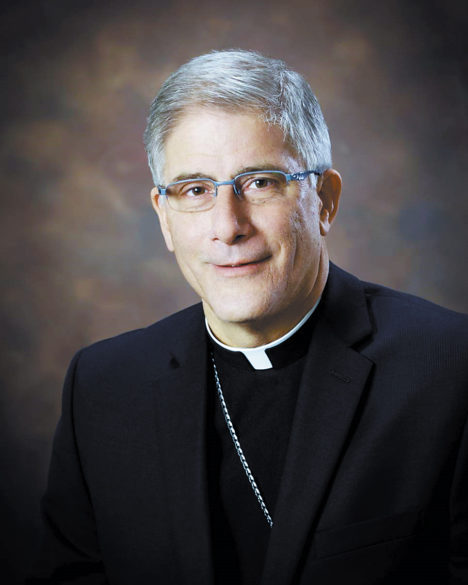
Although many have thrived and while others are creatively adapting, many families and communities across the nation and world are hanging on for dear life. Many are unable or unwilling to venture back out into the mainstream, while others are pressing to return to normalcy. We especially pause to entrust to God all whom the virus has taken in death, and for all who mourn their passing. The Lord’s cross is evident in their suffering, and we pray in the hope of the resurrection.
Paralleling the world of sports, the effect of the pandemic upon our worship services was drastic at the outset. Except for a world-wide pandemic who could have imagined that the curtain would fall down on all public services and ministries beginning in the middle of Lent and continuing through Palm Sunday, Holy Week, the Triduum, Easter Sunday and most of the 50-day Easter season.
Speaking on behalf of all the faithful of the Diocese of Jackson, that was March, April and May madness of a different sort. We began to creatively adapt on Pentecost weekend, and have stayed on course ever since. But our cherished public celebrations of faith over the past year closely mirror the world of sports and much more in our nation and world. It feels like we are walking through deep mud, or trying to walk tentatively on ice, when we are so eager fly on eagle’s wings.
Our churches have been amazing since the reopening last May. Gradually more and more of the faithful have experienced that we are balancing reverence with vigilance in our resolve to adore the Lord God and care for one another. Now, may our hearts proclaim the greatness of the Lord as we enter into the holist of weeks to commemorate the Lord Jesus’ passion, death and resurrection.
We are still unable to usher all comers into a full church because our protocols must remain in place for the foreseeable future, but the dawn of new life is shining upon us. The palms will be blessed and carefully distributed. The Chrism Mass will be celebrated on Tuesday of Holy Week with the priests of the Diocese of Jackson who will renew their ordination vows. The Oil of Catechumens and the Oil of the Sick will be blessed, and the Oil of Chrism will be consecrated, all of which will be distributed to our parishes throughout the diocese. The commemoration of the Lord’s Supper on Holy Thursday, his death on Good Friday, and the outpouring of joy at the Vigil of his resurrection will be a departure from the desert into the promised land.
There is a deep hunger to worship together as the Body of Christ, to hear God’s Word and to receive the Body and Blood of the Lord. The psalmist express this insatiable desire. “O God, You are my God, earnestly I seek You; my soul thirsts for You; my body yearns for You in a dry and weary land without water.” (63:1) “I used to contemplate you in the sanctuary, seeing your power and glory; for your grace is better to me than life. My lips will worship you.” (63:3-4)
Although it is not possible for the throngs to gather on this Easter Sunday, it is important to remember that the Catholic Church celebrates Easter Sunday for eight days through the Octave culminating on Divine Mercy Sunday, the second Sunday of Easter. Plan to celebrate the Lord’s death and resurrection at one of the weekday Masses, or at another time early in the Easter Season. Let us never forget that the “dawn from on high has broken upon us, to shine on those who dwell in darkness and the shadow of death, and to guide our feet into the way of peace.” (Luke 1:78-79)
Yes, the Lord Jesus is risen! For many in our world this is madness. For those who believe it is the madness of the Good News, twelve months out of the year.
Por Obispo Joseph R. Kopacz, D.D.
¡Qué año el que ha sido este! En el ámbito público, la cancelación de March Madness (locura de marzo) del año pasado fue la primera ficha de dominó que cayó en el mundo del deporte al comienzo de la pandemia. Un año después, el impacto sigue siendo fuerte, mientras observamos una arena casi vacía en Indianápolis, para el maratón del torneo de baloncesto universitario de este año en su camino hacia los cuatro finalistas. Es un símbolo idóneo de los últimos 12 meses.

Aunque muchos han prosperado y mientras otros se están adaptando de manera creativa, muchas familias y comunidades en todo el país y el mundo se aferran a sus vidas. Muchos no pueden o no quieren aventurarse al regreso de nuevo a la corriente, mientras que otros presionan para volver a la normalidad. Nos detenemos especialmente para encomendar a Dios a todos a los que el virus se ha apoderado de la vida y a todos los que lloran su muerte. La cruz del Señor es evidente en su sufrimiento y oramos con la esperanza de la resurrección.
Paralelamente al mundo de los deportes, el efecto de la pandemia en nuestros servicios de adoración fue drástico al principio. A excepción de una pandemia mundial, quien podría haber imaginado que el telón caería sobre todos los servicios públicos y ministerios comenzando a mediados de Cuaresma y continuando hasta el Domingo de Ramos, Semana Santa, Triduo, Domingo de Resurrección y la mayor parte de los 50 días de Temporada de Pascua.
Hablando en nombre de todos los fieles de la Diócesis de Jackson, esta fue una locura de marzo, abril y mayo o algo diferente. Comenzamos a adaptarnos creativamente el fin de semana de Pentecostés y hemos mantenido el rumbo desde entonces. Pero nuestras apreciadas celebraciones públicas de fe durante el año pasado reflejan de cerca el mundo de los deportes y mucho más en nuestra nación y el mundo. Se siente como si estuviéramos caminando sobre lodo profundo, o tratando de caminar tentativamente sobre hielo, cuando estamos tan ansiosos por volar en las alas de un águila.
Nuestras iglesias han sido increíbles desde la reapertura en mayo pasado. Gradualmente, más y más fieles han experimentado que equilibramos la reverencia con la vigilancia en nuestra determinación de adorar al Señor Dios y cuidarnos unos a otros. Ahora, que nuestros corazones proclamen la grandeza del Señor al entrar en la más santa de las semanas para conmemorar la pasión, muerte y resurrección del Señor Jesús.
Todavía somos incapaces de llevar a todos los que llegan a una iglesia completa porque nuestros protocolos deben permanecer en su lugar durante el futuro previsible, mientras el amanecer de una nueva vida está brillando sobre nosotros. La palma será bendecida y distribuida cuidadosamente. La Misa Crismal se celebrará el martes de Semana Santa solo con los sacerdotes de la Diócesis de Jackson, quienes renovarán sus votos de ordenación. Se bendecirá el Óleo de los Catecúmenos y el Óleo de los Enfermos, y se consagrará el Óleo del Crisma, todo lo cual será distribuido a nuestras parroquias de toda la diócesis. La conmemoración de la Cena del Señor el Jueves Santo, su muerte el Viernes Santo y el derramamiento de alegría en la Vigilia de su resurrección, serán una salida del desierto a la tierra prometida.
Hay un hambre profunda de adorar juntos como el Cuerpo de Cristo, de escuchar la Palabra de Dios y de recibir el Cuerpo y la Sangre del Señor. El salmista expresa este deseo insaciable. “¡Dios mío, tú eres mi Dios! Con ansias te busco, pues tengo sed de ti; mi ser entero te desea, cual tierra árida, sedienta, sin agua.” (Salmo 63: 1) “Solía contemplarte en el santuario, viendo tu poder y tu gloria; porque mejor me es tu gracia que la vida. Mis labios te adorarán“. (Salmo 63: 3-4)
Aunque no es posible que las multitudes se reúnan en este Domingo de Pascua, es importante recordar que la Iglesia Católica celebra el Domingo de Pascua durante ocho días hasta la Octava que culmina con el Domingo de la Divina Misericordia, el segundo domingo de Pascua. Planee celebrar la muerte y resurrección del Señor en una de las Misas entre semana o en otro momento a principios de la temporada de Pascua. No olvidemos nunca que “nuestro Dios, en su gran misericordia, nos trae de lo alto el sol de un nuevo día, para dar luz a los que viven en la más profunda oscuridad, y dirigir nuestros pasos por el camino de la paz.” (Lucas 1:78-79)
¡Sí, el Señor Jesús ha resucitado! Para muchos en nuestro mundo esto es una locura. Para los que creen, es la locura de la Buena Nueva, doce meses al año.
By Carol Glatz
VATICAN CITY (CNS) – Every Christian is unique because the Holy Spirit inspires something new and original in each person, creating “an endless field of holiness,” Pope Francis said.
“The one God, the Trinity of love, allows the variety of witnesses to flourish – all are equal in dignity, but also unique in the beauty that the Spirit has willed to be expressed in each of those whom God’s mercy has made his children,” the pope said March 17 during his weekly general audience.
During the audience livestreamed from the library of the Apostolic Palace, Pope Francis concluded his series of talks about prayer by looking at prayer as a relationship with the Holy Trinity, in particular with the Holy Spirit.
“The first gift of every Christian existence is the Holy Spirit,” he said. It is the key, essential gift because without the Holy Spirit, “there is no relationship with Christ and with the Father.”
The Spirit opens the human heart to Christ’s presence “and draws it into that ‘vortex’ of love that is the very heart of God,” he said.
The Holy Spirit “dwells in us; it is he who transforms us deeply and makes us experience the moving joy of being loved by God as his true children,” the pope said.
The Spirit writes the story of the church and of the world, he said, and “we are open pages, available to receive his handwriting.”
“In each of us, the Spirit composes original works because there is never one Christian who is completely identical to another,” creating a vast and flourishing “field of holiness.”
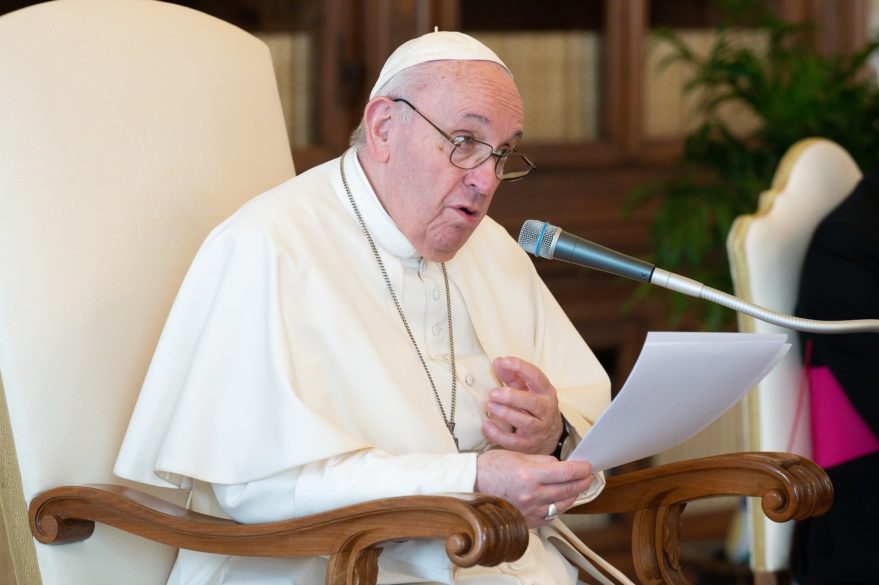
The church invites the faithful to call upon the Holy Spirit every day, to make Christ present so he can guide and transform his disciples, he added.
Calling on the Spirit for support and inspiration is important, especially when one has not prayed in a long time, has lost the desire to pray or recites prayers “like a parrot,” with no depth of feeling or faith, he said.
“This is the moment to say to the Spirit, ‘Come. Come, Holy Spirit and warm my heart. Come, teach me to pray, teach me to look to the Father, the son, teach me the way the path of faith goes, teach me to love, and above all, teach me to have an attitude of hope.’”
“If Christ were only far away in time, we would be alone and lost in the world,” Pope Francis said, but with the Spirit, “the possibility of encountering Christ is open to Christians of every time and place.”
Christians must “keep alive this flame” of the Holy Spirit, of God’s love, in their heart, the pope said, the same way the lamp next to the tabernacle stays lit “even when the church empties and darkness falls, even when the church is closed.”
“No one sees it, yet it burns before the Lord,” he said. “That’s how the Spirit is in our heart, always present like that lamp.”
IN EXILE
By Father Ron Rolheiser, OMI
One of Dorothy Day’s favorite saints was Therese of Lisieux, Therese Martin, the saint we call “the Little Flower.” At first glance, this might look like a strange affinity. Dorothy Day was the ultimate activist for justice, protesting in the streets, being arrested, going to prison, and starting a community and a newspaper, the Catholic Worker, in service of the poor. Therese of Lisieux was a contemplative nun, hidden away in an obscure convent in a small town in France. Indeed, during her whole life, except for one brief trip to visit to Rome with her family and parish, she never left her small town and, at her death, was probably known by fewer than two hundred people. Moreover, in her writings, one finds precious little that might be considered explicitly prophetic in terms of social justice. She wrote as a mystic, with a focus on the interior life and on our personal intimacy with Jesus. Not exactly the stuff of protests in the streets. So why did Dorothy Day, whose life looks so different, have an affinity for this young recluse?
Dorothy Day was drawn to Therese’s spirituality because she understood it beyond its popular misconception. Among all known saints, Therese of Lisieux stands out as one of the most popular saints of all time and as one of the most misunderstood saints of all time, and her popularity is part of the problem. Popular devotion has encrusted her person and spirituality in an over-simplistic piety that generally serves to hide her real depth. Therese termed her spirituality “the little way.” Popular piety, for the most part, thinks of her “little way” as a spirituality that invites us to live quiet, humble, simple, anonymous lives wherein we do everything, especially the small humble tasks asked of us, with fidelity and graciousness, unassuming, childlike, grateful to God just to be of service. While there is a lot of truth in that understanding, it misses some of the depth of Therese’s person and spirituality.
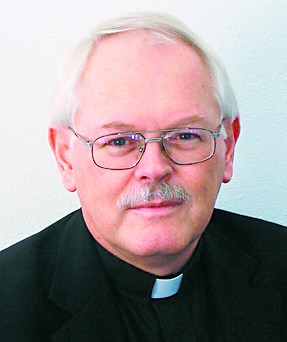
To understand Therese’s “little way” and its connection with justice for the poor, we need to understand certain things in her life that helped constellate the vision that lay behind her “little way.”
Therese of Lisieux had a very complex childhood. On the one hand, her life was touched by deep sadness, not least the death of her mother when Therese was four years old and several bouts of clinical depression from which she nearly died. She did not have an easy walk through childhood. On the other hand, she had an exceptionally graced childhood. She grew up in family of saints who loved her deeply and honored (and often photographed) her every joy and pain. She was also a beautiful young girl, attractive and graced with a disarming warmth and sensitivity. Her family and everyone around her considered her special and precious. She was much loved; but this did not make for a spoiled child. We can never be spoiled by being loved too much, only by being loved badly. Her family loved her purely, and the result was a young woman who opened her heart and person to the world in an exceptional way.
Moreover, as she matured, she began to notice something. She noticed how when she was a child her every tear was noticed, valued, and honored, but that this was not the case for many other people. She recognized that countless people suffer heartbreaks and injustices, endure abuse, are humiliated, live in shame, and shed tears that no one notices and no one cares about. Their pain is not seen, not honored, not valued. From this insight, she articulated this ground metaphor that undergirds her “little way.”
Her words: One Sunday, looking at a picture of Our Lord on the Cross, I was struck by the blood flowing from one of his divine hands. I felt a pang of great sorrow when thinking this blood was falling on the ground without anyone’s hastening to gather it up. I was resolved to remain in spirit at the foot of the Cross and to receive its dew. … I don’t want this precious blood to be lost. I shall spend my life gathering it up for the good of souls.
From this, we see that her “little way” is not about privatized piety, but about noticing and responding to the pain and tears of our world. Metaphorically, it is about noticing and “gathering up” the blood that is dripping from the suffering face of Christ which this face is presently suffering in our world in the faces of the poor, the faces of those who are bleeding and shedding tears because of heartbreak, injustice, poverty, lack of love, and lack of being deemed precious.
Dorothy Day walked the streets of the poor, noticing their blood, drying their tears, trying in her own way to gather them up. Therese did the same thing mystically, deep inside the body of Christ. It is no surprise that Dorothy Day took her as her patron saint.
(Oblate Father Ron Rolheiser is a theologian, teacher and award-winning author. He can be contacted through his website www.ronrolheiser.com.)
The following is an excerpt (with minor edits) that completes a homily I delivered on the 3rd Sunday of Lent. If you’d like to hear the complete audio plus a reflection on the content, please listen to my podcast “The Discerning Catholic” which can be found on Spotify and Apple Podcasts.
The Gospel for the 3rd Sunday of Lent, in which Jesus rebukes the ongoing business in the Temple during Passover, demonstrates that “we’ve always done it this way” is an obstacle to evangelization. The Court of the Gentiles is flooded with pilgrims and money changers and believers, and yet their activity is actually making it more difficult for the Gentiles to get a glimpse of what the faith is all about. If we are not careful, we can flood our own parishes and departments with practices that are stuck in their ways, and which can be obstacles to others joining in.
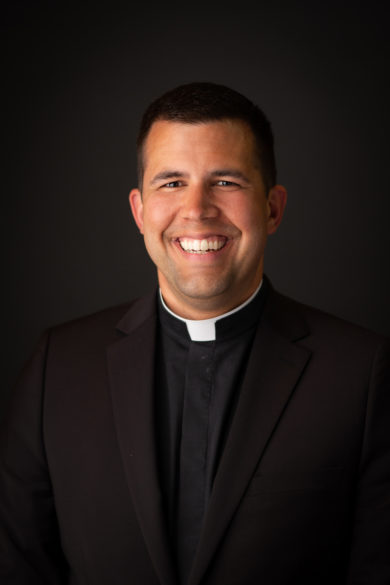
God will give you the help you need to make changes to your own routine that will bring you closer to him. God will help me take up my cross as I figure out ways to connect with young people that may not be in my wheelhouse. This is how we grow; it is how we become the disciples that we are called to be. And don’t settle for “this is the way it’s always been done” in the Church most of all, please! With the dynamic talent throughout our diocese who knows what can be unleashed when we work together? Bishop Kopacz has put forth a vision which calls us to Embrace Diversity, Serve Others and Inspire Disciples. That is a great place to start. The Bishop is our Shepherd, and we trust that he is Spirit-led in his efforts to build up the diocese, but each one of us has a part to play in bringing this vision about.
Some might say, “oh these are empty words, they are just a nice thing to slap on a poster.” Well yeah, they are empty until we fill them! And are we? Are we seeking to embrace diversity in a true way? Not in just saying we appreciate other cultures but in engaging and learning about the differences and similarities we have and inviting people to come to mass that are not just in our social circle? In the Vocation Department I want our seminarian poster to “look like” our diocese. I want men from all corners of our boundaries and from all backgrounds, and I need to develop strategies and skills to make that happen. I’m planning on going to brush up on my conversational Spanish this summer in order to connect with the parents of potential Hispanic discerners to keep them in the loop of their son’s journey. Are we serving others? As Vocation Director I need to serve our seminarians and discerners by pouring myself out for them; by spending time listening to their needs and responding. We all are called to do this in our own way with those entrusted to us. And are we inspiring disciples? First of all are we learning from our Good Teacher Jesus and then becoming witnesses to others through that relationship, and is that relationship leading us to be joy-filled and attractive to those who are struggling with their faith?
We can’t just do the same old thing and expect a different result. We must become evangelists to the fullest extent of the term. We cannot only promote that which we are comfortable with about our faith, but we must learn more and more about what Jesus teaches and become so engulfed in God’s love for us that we simply want to do the will of the Father and nothing else. This will lead to a dynamism that is attractive, and which parts the red tape of “we’ve always done it this way” and leads more people through the doors of our parishes and through the doors of the seminary as well!